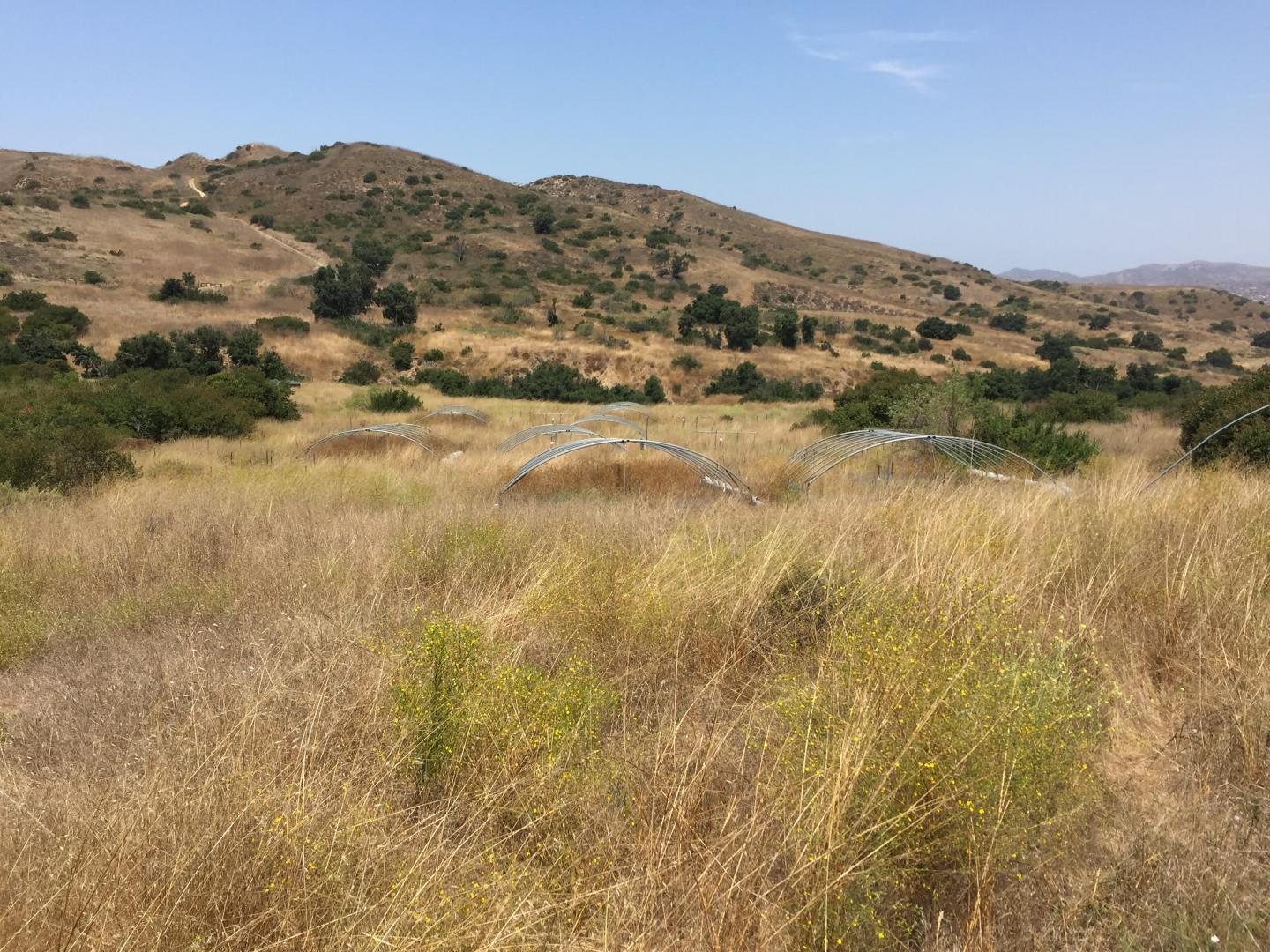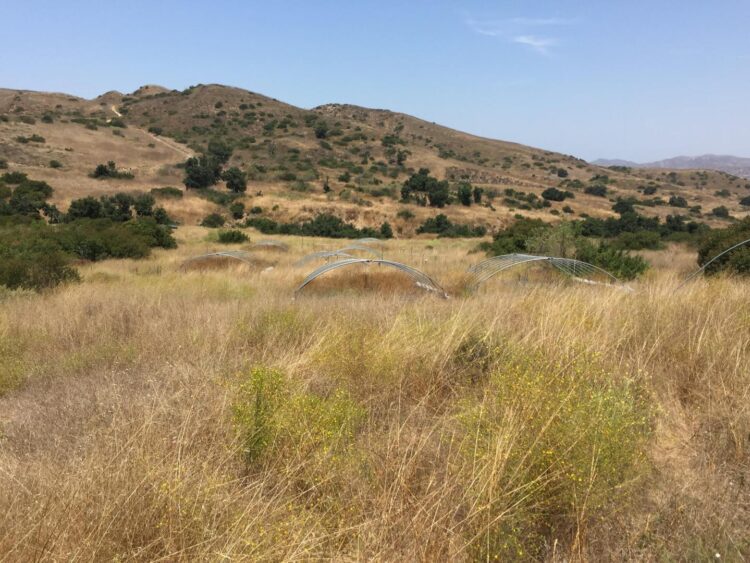Digging into climate change’s impact on microbes

Credit: Ecology and Evolutionary Biology Professor Steven Allison
University of California, Irvine, biologists have discovered that plants influence how their bacterial and fungal neighbors react to climate change. This finding contributes crucial new information to a hot topic in environmental science: in what manner will climate change alter the diversity of both plants and microbiomes on the landscape? The paper appears in Elementa: Sciences of the Anthropocene.
The research took place at the Loma Ridge Global Change Experiment, a decade-long study in which scientists simulate the impacts of climate change on neighboring grasslands and coastal scrublands in Southern California. Experimental treatments there include nitrogen addition, a common result of local fossil fuel burning, and simulated drought imposed by covering patches of land with waterproof roofs during rainstorms.
In the project’s early years, researchers focused on answering climate questions involving plants only. A research team led by Jennifer Martiny, professor of ecology & evolutionary biology and co-director of the UCI Microbiome Initiative, decided to examine whether the vegetation itself influences how climate change affects the bacteria and fungi in the ground. Soil microbes decompose dead plants, regulating the amount of carbon dioxide exchanged with the atmosphere.
The scientists sequenced microbial DNA in the grassland and scrubland, finding that the types and number of bacteria and fungi differed between them. Next, the team compared how the microbes reacted to nitrogen fertilizer and drought by monitoring the microbial DNA in plant litter, primarily dropped leaves and stems, over a three-year period.
“We thought diminished water might cause the scrubland microbial community to become more similar to that of the grasslands because there is evidence that scrublands start to grow increased grasses under drought conditions,” said Sarai Finks, the paper’s first author and UCI graduate student. “However, it didn’t happen. The two microbial communities remained distinct.”
The team also discovered that while simulated drought affected both bacteria and fungi in grassland and scrubland, there were some unexpected differences. Nitrogen addition only affected the bacteria and its impact was far less than that of drought.
“Researchers have looked at this kind of interaction previously, but not on the scale we have done here. We were able to investigate two different kinds of plant communities right next to each other,” Finks said, adding that the team hopes their findings will be helpful to other scientists investigating microbial communities. “Microbes are crucial to the carbon cycle and we need to learn what changes in microbial diversity mean for the environment.”
The researchers’ paper was the latest to be published from scientific data collected before the Silverado wildfire struck the Loma Ridge Global Change Experiment in October 2020. “Scientists are now looking into researching post-fire interactions between plants and the microbial communities at the site,” Finks said.
###
The research was supported by the National Science Foundation and the U.S. Department of Energy.
Researchers who contributed to this work were: Sarai S. Finks, Claudia Weihe, Sarah Kimball, Steven D. Allison, Adam C. Martiny, Kathleen K. Treseder and Jennifer B. H. Martiny.
About the University of California, Irvine:
Founded in 1965, UCI is the youngest member of the prestigious Association of American Universities. The campus has produced three Nobel laureates and is known for its academic achievement, premier research, innovation and anteater mascot. Led by Chancellor Howard Gillman, UCI has more than 36,000 students and offers 222 degree programs. It’s located in one of the world’s safest and most economically vibrant communities and is Orange County’s second-largest employer, contributing $7 billion annually to the local economy and $8 billion statewide. For more on UCI, visit http://www.
Media access: Radio programs/stations may, for free, use an on-campus ISDN line to interview UCI faculty and experts, subject to availability and university approval. For more UCI news, visit news.uci.edu. Additional resources for journalists may be found at communications.uci.edu/for-journalists.
Media Contact
Rahasson Ager
[email protected]
Related Journal Article
http://dx.





